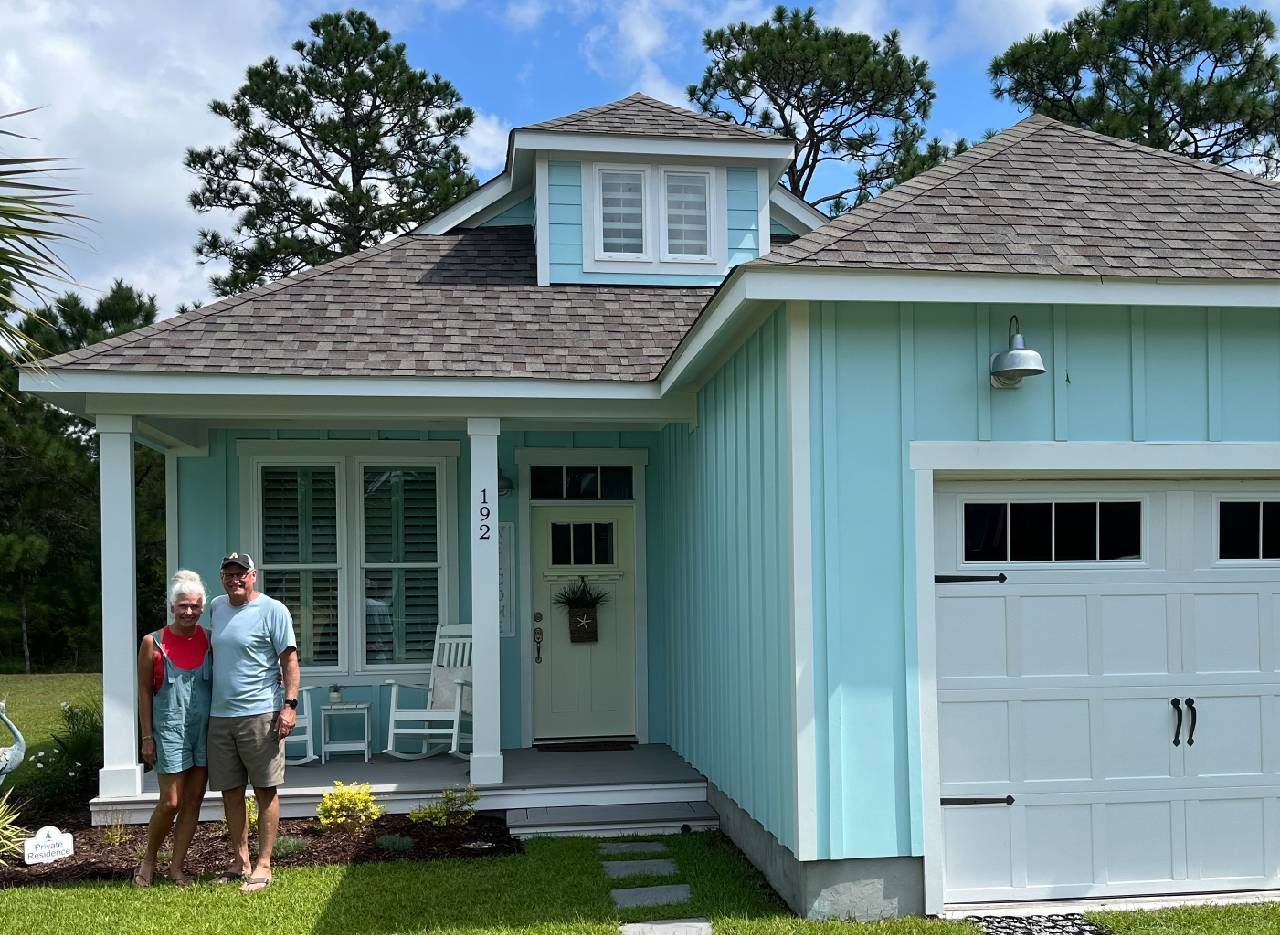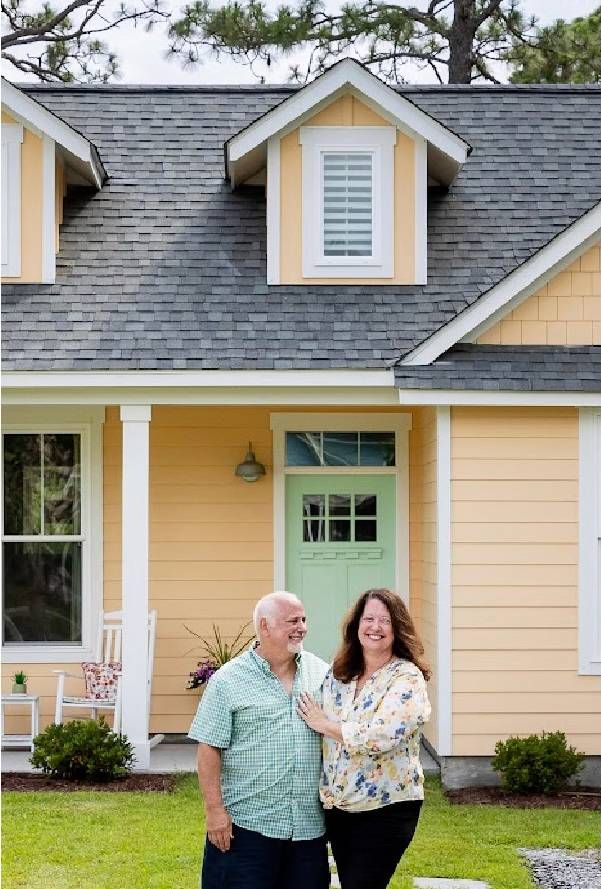Retirement Communities Going Solar
Forward-thinking developers are putting the sun in the Sun Belt to work, cooling homes without contributing to climate change
As humanity finishes up year eight of the eight-warmest years on record, it makes more sense than ever for people to make the most of energy from the sun.

Indeed, Sun Belt retirement metropolises from Arizona to Florida have become unbearably hot, so it makes sense that more of them are not only tapping solar power, but also storing it and reducing carbon emissions from burning fossil fuels for energy.
Of the solar communities that have broken ground in recent years, many — if not most — have a direct link to either an electric utility or solar installation company. OceanView in Falmouth, Maine, for example, was wired by Revision Energy. Billed as a "21st Century Retirement Community," the 80-acre complex near Portland, Maine's largest city, also offers assisted living and memory care.
Saving on Electric Bills
Although not all of Oceanview's structures carry rooftop solar, it has attracted "many residents who share common value of sustainability and may even have children or grandchildren in the area," said Diane Kibben, OceanView's director of operations.
Residents' savings from having access to solar energy is significant: "Hundreds of thousand dollars to date" while "homes that have good orientation to the sun see electric bills as low as $15 a month," Kibbin adds.
OceanView went solar relatively early, with solar-heated water in 2007 and photovoltaic panels in 2014. "All of the complex's large buildings have solar panels, notes Kibbin, who adds that retirement community developer John Wasileski was an early adopter of solar-energy technologies.
Target: Net Zero
Wasileski, who says his inspiration for a solar retirement community were his children and grandchildren, notes "I became very motivated to decarbonize our campus and set a goal in the next five years, or by the year 2028, to reach net zero on our OceanView campus."
"We wanted to have price points that were affordable, and have the solar power included in the purchase price."
The development encompasses approximately 320 residential units and uses propane and electrical energy from the grid. Wasileski said he intends to make OceanView a net zero emitter of greenhouse gases by placing solar panels on every house to generate its own electricity.
In the wake of a wave of federal clean energy tax incentives in President Biden's "Inflation Reduction Act," there are multiple drivers to build solar-powered communities. State and federal tax incentives have subsidized solar power so that individual homeowners and larger-scale long-term care facilities can reap the benefits of clean energy.
New Communities Sprout
"Several senior living providers are looking to solar options as a way of benefitting their communities and also touting a commitment to environmental options that reduce their carbon footprint," notes McKnights Senior Living, an industry trade publication.
Indeed, solar-powered retirement homes are part of a larger trend that has emphasized "green" building that also conserves energy, employs healthier building practices and cuts overall carbon emissions.
Although firm numbers are hard to come by, several self-contained, solar-powered communities are open or being built at an accelerated pace in the past year.
One of the largest is Babcock Ranch, near Ft. Myers, Florida, which is powered by an 870-acre solar farm. As an additional amenity in hurricane country, the development boasts "the largest solar-plus-storage system operating in the U.S. today." That means the complex can use power stored in batteries if the electrical grid goes down.
Very Big Batteries
Built in partnership with Florida Power and Light, Babcock Ranch's batteries can store 1 megawatt of power, enough to provide electrons to the community for four hours. Although not billed as a retirement development, the virtually self-contained 18,000-acre community also features nature trails, coworking spaces and schools.

A much-smaller scale solar community — Herons Nest in Shallotte, North Carolina — also features solar-powered homes with battery back-up. Nestled in a coastal enclave near Wilmington, it was built in partnership with a solar power company.
Founder and architect Graham Adams planned 31 homes for Herons Nest; 27 of which are built. Each has solar panels, which are priced into the cost of the house. Although he doesn't bill his development as a retirement community, some 55% of the current residents are retired. He also lives there.
Adams also opted for smaller footprints for his homes, which he calls "solar cottages," modeled on charming basic bungalow designs priced initially from $200,000 to $350,000. They range in size from 860 to 2,400 square feet.
'Solar Cottages'
"We wanted to have price points that were affordable," says Adams, "and have the solar power included in the purchase price. We also have a solar field for back-up (in case of storm power outages), but it's in the testing phase."
Since a growing concern in Sun Belt locales is high electric bills due to air conditioning, solar power can offset those costs through energy credits applied to bills when demand is highest.
Adams estimates that Herons Nest homeowners pay an average one-third less on their monthly power bills. There's also the persistent issue of reliability. Many communities are in coastal areas repeatedly buffeted by violent storms that take down the local power grid.
While it's clear that solar power can save retirees money and reduce their carbon emissions, major builders are reluctant to include solar systems in new retirement communities. That may change however, as the climate warms — especially in the torrid South and Southwest.
Yet homebuyers may be reluctant to pay for solar as an upgrade that's not embedded in the purchase price. Adams said he approached several major developers with his solar cottage concept. All of them turned him down.
"Until you can go down to Home Depot or Lowe's and buy a solar system in a box, you'll have to deal with a lot of middlemen, which is expensive."
"Until you can go down to Home Depot or Lowe's and buy a solar system in a box," notes Adams, "you'll have to deal with a lot of middlemen, which is expensive. Some builders believe homeowners are more interested in nice countertops, but that is not the case at Herons Nest. Builders are making money (selling conventional homes), so why rock the boat?"
Of course, you needn't focus exclusively on a solar-powered retirement community if choosing to relocate. Uncle Sam and your state may offer multiple incentives for going solar if you want to stay in your present home.
Federal solar tax credits available through the Inflation Reduction Act offer a wide range of write-offs for energy conservation and solar appliances. So if you want to let the sun shine in and green your home, you can also lower your taxes while cutting your electricity bill and carbon emissions.

